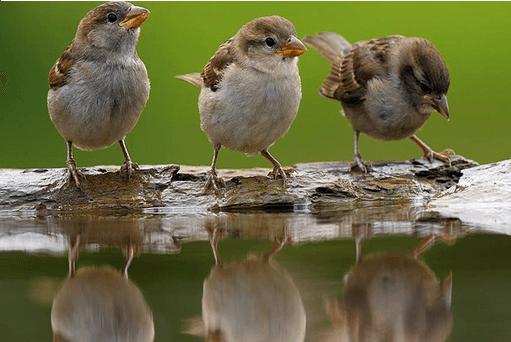Sparrows are natural bioindicator of environmental health-and these are the most familiar birds in the world. But the numbers of sparrow population has been declined in urban areas of India. Many food chains of the ecology rely on it, but consistent decline in their numbers can put their existence in extinct list.
I still remember, in the very childhood, our granny kept a water & food in an earthen pot for sparrows in the veranda & terrace. She never forgot to care them, then why such culture for taking care of pets is diminishing. The pleasing chirping of lovely sparrows in early morning and in the evening time will be disappearing soon. The fall in number of sparrows signifies a threat to the ecosystem, have a look at the reasons:
Felling of trees
It’s a simple theory; the number of trees is directly proportional to the number of plants & animals on the earth. The trees have been cutting down mercilessly for personal uses without giving second thought that in preparation of building infrastructure, we are engaged in destroying these tiny birds’s home. The spike in felling of trees is the major reason behind it because sparrows and other birds are facing major loss of habitats.
No bugs
With the increasing uses of mosquito repellents and air fresheners in the houses, it became uneasy for the sparrows to find bugs & insects to eat. Sparrows were considered to be farmer’s best friend as sparrows eat insects. They clean farmland when crops are harvested. These hosts depend on the larva of such insects. But the widespread loss of habitats and uses of pesticides and insecticides usage has taken away their mode of living.
Cavity nesting
Modern buildings and infrastructure don't have crannies and nooks like the old structures. Such cavities were essential for birds nesting.
Absence of native plants
Native plants are considered as natural plants for sparrows, like Adulsa, Mehandi these are replaced by non-native plants like Durranta Erecta and others according to modern trends.
Change in the ecosystem
Due to increase in population and pollution sparrows are facing loss of habitats and issues in reproductive system that’s why sparrows are close to becoming extinct.
Change in environment
Sparrows are sensitive to environmental changes, but due to industrialization and urbanization, they are resultantly facing living hazardous.
To protect and prevent their living we need to work for good cause that enables to restore a healthy and natural habitat for these tiny birds.













No Comments